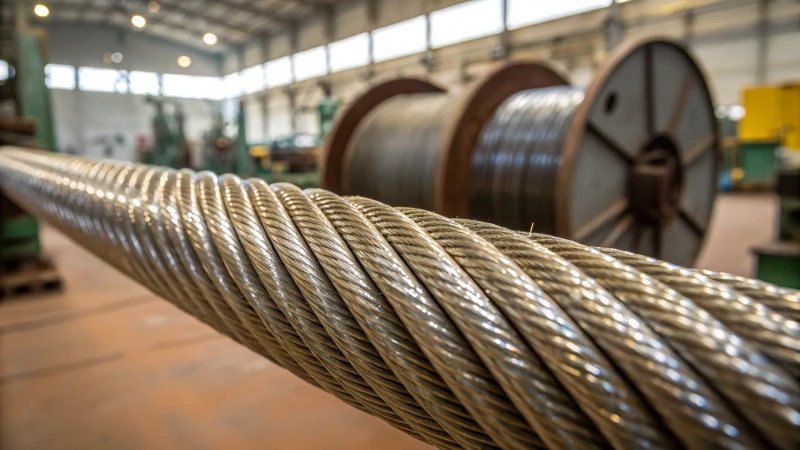
When I first stepped into the world of industrial machinery, understanding steel wire ropes was a game-changer. The right material can make or break a project.
Steel wire ropes are primarily made from high-carbon steel, stainless steel, and alloy steels. Each material is chosen for its strength, corrosion resistance, and fatigue resistance, catering to specific industrial needs.
I remember the time I had to choose the perfect steel wire rope for a construction project. It felt like a crucial decision because each material—be it high-carbon steel for tensile strength, stainless steel for corrosion resistance, or alloy steels for high-load resilience—brings its own set of advantages. Diving into the details, I discovered how these materials not only meet diverse industry demands but also drive innovations in tough environments, like offshore drilling and mining. It's fascinating how advancements in material science continue to redefine what's possible with these industrial workhorses.
High-carbon steel is used for its strength in wire ropes.True
High-carbon steel provides excellent tensile strength, ideal for heavy-duty applications.
Stainless steel wire ropes lack corrosion resistance.False
Stainless steel is renowned for its corrosion resistance, making it ideal for wet environments.
Why is High-Carbon Steel Preferred for Steel Wire Rope?
You know that moment when you realize something is just perfect for the job? That's high-carbon steel for wire ropes—tough, reliable, and built to last.
High-carbon steel is chosen for steel wire ropes due to its exceptional tensile strength and durability, which are crucial for high-load applications. Its unique composition allows these ropes to withstand extreme stress and harsh conditions, ensuring long-lasting performance.
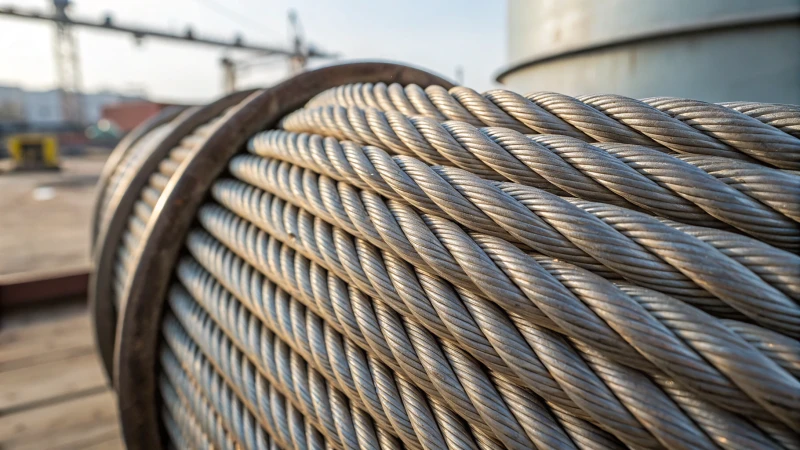
The Composition of High-Carbon Steel
Imagine cooking a perfect steak—you need just the right amount of seasoning. High-carbon steel is similar, with its carbon content dialed in between 0.6% to 1.0%. This precise mix hardens the steel, making it less bendy but incredibly tough and durable under stress1.
| Property | High-Carbon Steel | Other Steel Types |
|---|---|---|
| Carbon Content | 0.6% - 1.0% | <0.3% (Low-Carbon) |
| Tensile Strength | 600 - 1200 MPa | 400 - 550 MPa |
| Hardness | High | Low |
This table outlines why high-carbon steel stands out for specific uses, thanks to its unmatched properties.
Applications in Heavy-Duty Environments
Picture a day at a construction site. Everything is massive, loud, and powerful. That's where high-carbon steel thrives—perfect for building projects and mining ventures where materials face incredible pressure and friction. In such scenarios, steel wire ropes2 made from high-carbon steel shine with their resilience.
A Case Study: Construction Cranes
Think about cranes lifting heavy loads high into the sky. The wire ropes must endure enormous tension without snapping. High-carbon steel's remarkable tensile strength ensures these ropes perform safely and reliably under such stress.
Resistance to Wear and Fatigue
Picture an elevator tirelessly moving up and down all day. High-carbon steel wire ropes excel here too, resisting wear and fatigue from constant motion. Their carbon-rich structure helps maintain their integrity even after countless cycles, vital in industries where downtime costs dearly.
Curious about material fatigue3 in metals? Explore more resources to learn how different steels handle fatigue.
Advancements in Material Science
Imagine the future of wire ropes getting even better. Recent innovations have led to enhanced alloys4 that boost performance further, especially against fatigue and corrosion in challenging places like offshore drilling.
| Alloy Type | Benefit |
|---|---|
| Chromium-Alloyed Steel | Increased corrosion resistance |
| Vanadium-Steel | Enhanced fatigue resistance |
These advancements ensure high-carbon steel stays ahead in wire rope material choices, adapting to evolving industrial demands. By understanding these innovations, you're well-equipped to appreciate future material science developments.
High-carbon steel has higher tensile strength than low-carbon steel.True
High-carbon steel's tensile strength ranges from 600 to 1200 MPa, higher than low-carbon's 400 to 550 MPa.
Low-carbon steel is more durable under stress than high-carbon steel.False
High-carbon steel's high carbon content enhances its durability under stress compared to low-carbon steel.
How does stainless steel enhance corrosion resistance in wire ropes?
Remember the last time you were caught in a downpour and your raincoat kept you dry? Stainless steel acts like that trusty raincoat for wire ropes, shielding them from corrosion.
Stainless steel boosts corrosion resistance in wire ropes thanks to its chromium content, which forms a protective oxide layer. This barrier shields against rust, making it perfect for tough environments.
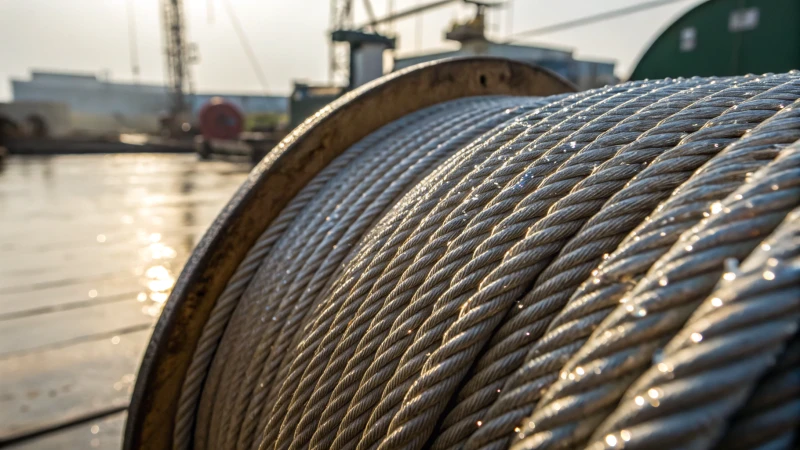
The Role of Chromium in Stainless Steel
Think of chromium as the superhero in stainless steel's story, donning its cape to fend off rust. It reacts with oxygen to form a thin, almost invisible layer on the surface of the steel. This isn't just any layer; it's like an invisible shield that stops oxidation in its tracks, keeping those wire ropes strong and rust-free. I remember when I first learned about this during a marine project5. Seeing those ropes stand strong amidst salt and spray felt like witnessing a little miracle every day.
Other Alloying Elements
But chromium doesn't fight alone. Nickel and molybdenum join the team, each adding their own strength. Nickel boosts the rope's resilience and flexibility, while molybdenum steps in when chloride-rich environments threaten, offering extra protection against pitting. It's like assembling a dream team of elements to tackle different challenges.
Here's a quick look at some common grades:
| Grade | Chromium (%) | Nickel (%) | Molybdenum (%) |
|---|---|---|---|
| 304 | 18-20 | 8-10.5 | - |
| 316 | 16-18 | 10-14 | 2-3 |
These compositions are like choosing the right outfit for the right occasion—engineered to perform in specific scenarios.
Applications and Benefits
In industries like construction6 and mining, stainless steel wire ropes aren't just about surviving—they're about thriving. Their ability to stand up to harsh conditions means they last longer and require less upkeep, which is music to any project manager's ears. I once had a colleague who swore by them for their reliability on a particularly challenging construction site; they saved time and stress by reducing breakdowns.
Plus, they look good too. Stainless steel's sleek appearance doesn't just resist rust; it resists fading and discoloration, making it a favorite in architectural projects where looks matter just as much as strength. So, when selecting the right grade for your next project, think of what these wire ropes might face—and choose the ones that are ready for the challenge.
Chromium forms a protective oxide layer on stainless steel.True
Chromium reacts with oxygen, creating an oxide layer that prevents further corrosion.
Nickel decreases the strength of stainless steel wire ropes.False
Nickel actually enhances the strength and ductility of stainless steel.
How Do Alloy Steels Enhance High-Load Applications?
Ever wondered what keeps those massive construction cranes steady and reliable? The secret often lies in alloy steels, a key player in high-load applications across industries.
Alloy steels are indispensable in high-load applications due to their enhanced strength and fatigue resistance, achieved by adding elements like chromium, nickel, and molybdenum. These enhancements allow alloy steels to perform exceptionally well under stress.
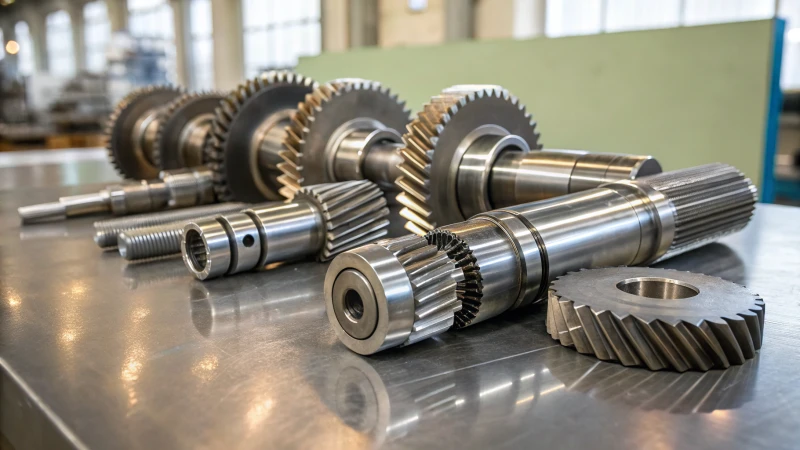
Understanding Alloy Steels in High-Load Contexts
Let me take you back to when I was first introduced to the world of alloy steels. Picture this: I'm standing on a bustling construction site, hard hat on, watching as a crane effortlessly lifts enormous steel beams. It was then that I learned about the magic of alloy steels—those unsung heroes behind the scenes. They're crafted by blending iron with elements like chromium, nickel, and molybdenum7, which boosts their strength, hardness, and wear resistance.
Key Properties of Alloy Steels
| Property | Benefit in High-Load Applications |
|---|---|
| Tensile Strength | Withstands high stress without breaking |
| Hardness | Resists deformation and surface wear |
| Fatigue Resistance | Enhances longevity under cyclic loading |
These remarkable properties are why alloy steels are a staple in demanding sectors like construction and mining, where equipment constantly endures heavy loads.
Practical Applications of Alloy Steels
- Construction Machinery: Remember that crane I mentioned? It's a perfect example. Alloy steels provide the strength and durability8 crucial for safely lifting heavy materials, ensuring reliability in construction projects.
- Mining Equipment: Mining is a tough gig. The abrasive environment demands materials that can withstand punishment. That's where alloy steels shine, especially in components like drills and loaders.
- Automotive Components: Think about the gears and axles in your car. Alloy steels make them robust enough to ensure your safety and optimal performance.
Advancements in Alloy Steel Technology
Recently, there's been exciting progress in developing specialized alloys that further enhance performance. These include alloys with improved corrosion resistance9, ideal for offshore drilling and marine use.
By fine-tuning alloy compositions, engineers create materials tailored to specific high-load needs. The adaptability of alloy steels makes them the go-to choice across diverse industries.
Alloy steels are used in construction machinery.True
Alloy steels provide strength and durability needed for heavy lifting.
Alloy steels are not suitable for mining equipment.False
They resist abrasion and corrosion, ideal for mining conditions.
What are the newest breakthroughs in wire rope technology?
Dive into the world of wire ropes, where innovation meets durability and strength like never before.
The latest advancements in wire rope materials include nanocoatings for better corrosion resistance, hybrid synthetic cores for lighter weight, and advanced alloy formulations enhancing tensile strength and fatigue resistance.
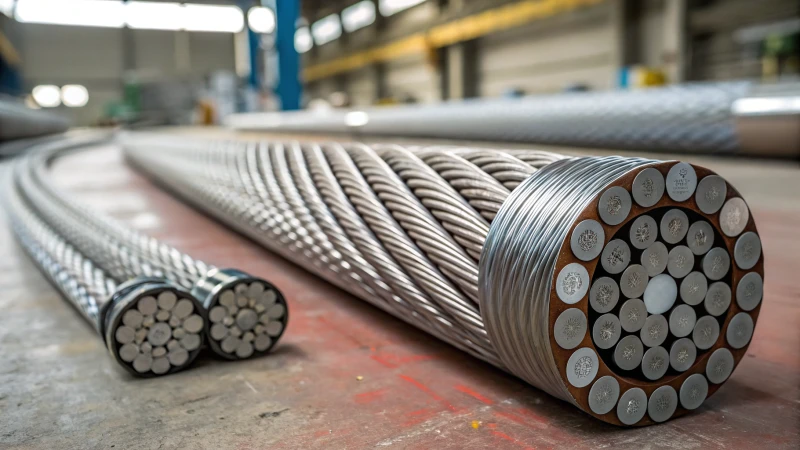
Nanocoatings for Enhanced Corrosion Resistance
I remember the first time I saw a ship’s wire rope that had succumbed to the harshness of the salty sea air—it was a lesson in just how unforgiving the elements can be. This is where nanocoatings come into play, acting like an invisible shield. In marine and offshore applications10, these coatings form a slender, protective layer on wire ropes, warding off rust and corrosive agents. It's like giving the ropes a superhero cape, reducing maintenance and elongating their life span.
Hybrid Synthetic Cores
There was this project where every ounce counted—literally. We were up against weight limits that felt as stubborn as a rock. Enter hybrid synthetic cores. These ropes ingeniously mix synthetic materials with traditional steel, creating a strong yet lightweight option perfect for aerospace11 and construction projects. Not only did they lighten our load, but they also improved flexibility and made handling the ropes much easier, boosting our operational efficiency significantly.
Advanced Alloy Formulations
I’ve seen ropes put through the wringer in mining operations, carrying loads heavier than a week's worth of stress. Advanced alloy formulations have been a game changer here. These new alloys, spiced with elements like vanadium or niobium, provide exceptional performance under high-stress conditions. Perfect for the demanding environments of mining12, they offer the strength needed without compromising on durability.
| Feature | Description |
|---|---|
| Nanocoatings | Provides rust resistance and longer lifespan |
| Hybrid Cores | Combines lightweight synthetic materials with steel for strength |
| Advanced Alloys | Enhances tensile strength and fatigue resistance for demanding environments |
These innovations are not just about pushing boundaries; they're about moving towards sustainability. Eco-friendly materials and processes are increasingly becoming the norm. Some companies are even dabbling in biodegradable coatings13, aiming to lessen environmental impact while maintaining performance. And let's not forget smart technologies14 that enable ropes to self-monitor and alert us to potential problems before they escalate. It’s like having an extra set of eyes watching over operations, ensuring safety and efficiency.
Nanocoatings reduce wire rope maintenance costs.True
Nanocoatings protect wire ropes from corrosion, lowering upkeep costs.
Hybrid synthetic cores increase the weight of wire ropes.False
Hybrid synthetic cores reduce the weight, enhancing flexibility and handling.
Conclusion
Steel wire ropes are made from high-carbon steel, stainless steel, and alloy steels, each selected for strength, corrosion resistance, and fatigue resistance in various industrial applications.
-
Understanding this can help identify why high-carbon steel is ideal for wire ropes. ↩
-
Discovering the role of steel wire ropes highlights their importance in safety and performance. ↩
-
Exploring fatigue provides insights into the longevity of materials like high-carbon steel. ↩
-
Learning about advanced alloys reveals how they enhance performance and durability. ↩
-
This link provides insights into why stainless steel is favored for marine applications, detailing its corrosion resistance properties. ↩
-
Explore how stainless steel's durability benefits construction projects, emphasizing its resistance to harsh weather and structural integrity. ↩
-
Discover how these elements enhance the properties of steel for high-load applications. ↩
-
Learn why alloy steel is chosen for construction machinery requiring strength. ↩
-
Explore new developments in alloy steels designed to resist corrosion. ↩
-
Explore how nanocoatings improve corrosion resistance in marine environments, enhancing rope longevity. ↩
-
Discover why hybrid synthetic cores are transforming weight management in aerospace applications. ↩
-
Learn how advanced alloys boost tensile strength and fatigue resistance in mining operations. ↩
-
Understand how biodegradable coatings contribute to eco-friendly practices in wire rope production. ↩
-
Find out about smart technologies enabling self-monitoring capabilities in modern wire ropes. ↩

